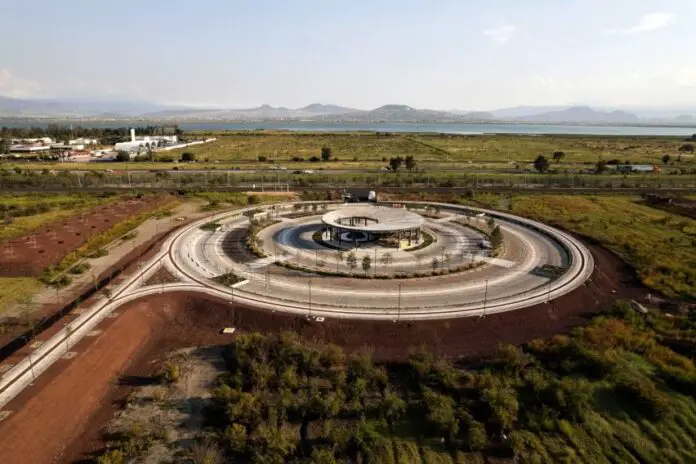Architect Iñaki Echeverria has completed the first phases of an eco-park three times the size of Manhattan in Mexico City, using some of the infrastructure from the abandoned Foster + Partners-designed airport.
The Lake Texcoco Ecological Park project involves the regeneration and development of public infrastructure on a massive wetland environment on the eastern side of Mexico’s capital city. It opened to the public last month.
The park is 14,030 hectares in size, making it one of the largest urban parks worldwide, and is protected by federal decree as an ecological site. The project was created to mitigate the effects of density and climate change – and enhance communal welfare.
Echeverria stated that the project would be a key to the larger regeneration of the area when he accepted the commission on the condition he also became the director of the park. “This is not really a project about Mexico City – it is a larger endeavour, it’s the entire valley,” Echeverria said.
Echeverria stated that ecological restoration is not only about aesthetics; it is about subsistence.
The site was once home to one of the massive lakes in the Valley of Mexico before the Spanish conquest. The park now sits on highly salinated soil and is covered by lakes, informal settlements, and agriculture. It is bordered by water filtration systems and dense residential neighbourhoods on all sides.
Much of the project involved restoring the wetlands, including the construction of greenhouses to cultivate and plant native species in the area. The entire park is nearly three times the size of Manhattan.
Buildings like a viewing platform, visitors centre, sculptural pavilions, and a sports park were constructed on the site where the scrapped airport was to be built. The latter was built using the abandoned infrastructure and roads from the airport project that was cancelled in 2018 following a public referendum.
Echeverria has been working on ideas for the park since the early 2000s, and he said that prior attempts to preserve the ecology of the site date back to at least the early 1900s. “There is this idea that somehow this project of regeneration stopped the airport,” he said.
However, Echeverria thinks it was the other way around; the airport stopped the project of regeneration. He stated that until the 1970s, the park was not “desiccated” and that the high salinity of the soil has always made it difficult to build.
The team used aspects of the airport’s infrastructure and roads to create the sports park in order to minimize impacts on the ecosystem. They recycled one of the bridges for public access to the land, and they decided to construct buildings more intensely in areas with a lot of concrete and barren land.
Several pitches are organized as “islands” to minimize the impact and preserve the sports facilities during the annual flooding of the area.
Echeverria said that the project will bring both social and environmental benefits by reducing surrounding temperatures due to the regenerated ecosystem and providing cultural benefits through events and observation of the landscape.
He also noted that the presence of a water filtration system and infrastructure around the park allows for more rational integration of blue and green infrastructure into the city in phases rather than hard boundaries.
“This project is what I’ve been calling for a while soft infrastructure. or soft engineering,” he said.
“Engineering has to move on to something much more sensible, where you occupy the same space in much more efficient terms.”
Over 11,000 people worked on the Lake Texcoco Ecological Park over the last decade, and Echeverria hopes that they will be able to continue adding aspects to the project. However, he said that with the new administration in place at the top of the federal government it’s “unclear” what the next steps are.
Source: Dezeen






